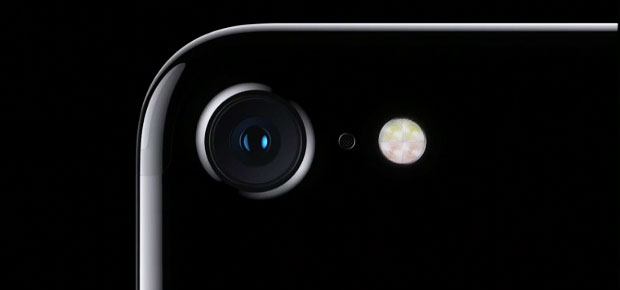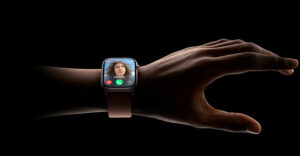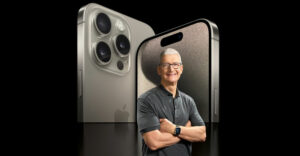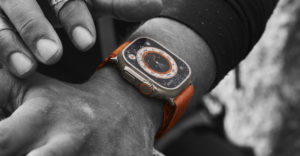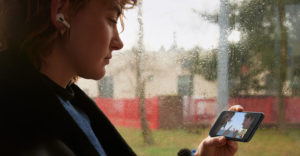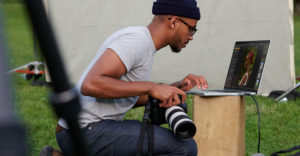Apple raised the ante for cameras in flagship phones with the announcement of its iPhone 7 and iPhone 7 Plus on Wednesday.
Others already have taken the dual-camera approach to smartphone photography — notably HTC, LG and Huawei.
“While it’s not the first dual camera mounted in a smartphone, it’s on par with the others in terms of basic functionality,” said Brian Blau, a research director for Gartner.
Going one step further, Apple has added its own powerful twist to the concept.
“Apple has updated the camera app to make using the dual camera easy — and that could be their best feature, as focusing on the user experience is always one of Apple’s strengths,” Blau told TechNewsWorld.
The iPhone 7 Plus has two cameras that sit side-by-side on the back. There’s the 12 megapixel camera with a 28mm lens found in the base version of the phone, as well as a camera with a 56mm lens. The setup allows a “phonetographer” to capture better zoom shots at greater distances from a subject.

“To my knowledge, that’s the first time anyone has taken that approach with dual cameras,” Ian Fogg, a senior director at IHS, told TechNewsWorld.
Proof in the Bokeh
The dual camera system, which has a 2x optical zoom and 10x digital zoom, also can produce depth-of-field effects. With the tap of an icon, the camera will focus on a subject in the foreground and blur the background, or bokeh, for a nice portrait effect.
However, the software for the portrait effect is not yet available — it’s expected later in the year as a free upgrade.
“We will have to see how the simulated bokeh looks in the real world,” observed Stan Horaczek, online editor for Popular Photography and American Photo, “but having the ability to capture images with a true 56mm equivalent lens without having to digitally zoom is a pretty big deal.”
Apple appears to be targeting some very specific aspects of the camera market in which dedicated cameras still have a distinct advantage, he added.
“The iPhone 7 Plus has an ‘optical zoom’ — if you apply the term loosely — which is something smartphone cameras typically can’t do,” Horaczek told TechNewsWorld.

The 7 Plus’s optical zoom doesn’t zoom in the traditional sense of smoothly enlarging a subject. It jumps from one enlargement size to another.
“It also goes after the background blur, which acts as an indicator for many people that a photo was taken with a fancy — or professional — camera,” Horaczek remarked.
iPhone 7 camera
Apple has improved the camera in the iPhone 7 as well.

Image stabilization, previously found only on the Plus versions of the phone, is included with the base model. Image stabilization helps avoid blurry pictures caused by camera movement and hand shake.

The 7 also has a six-element f/1.8 lens for better performance in low light conditions. The new wider aperture allows more light to hit the camera’s sensor and produce brighter shots with more detail.
“The move up to an f/1.8 lens from an f/2.2 is a solid move, but they’re certainly not the first to do it,” Horaczek said. “It also may not make as much of an impact as some people think.”
In addition, the camera’s flash is 50 percent brighter than the previous iPhone model. The four LEDs in the “smart” flash can adjust their output to the color temperature in a shot’s frame for better pictures.
The front-facing camera has been upgraded, too. The resolution has been boosted to 7 MP, and it has wide color capture for sharper and more vibrant selfies.

RAW Support
Both the iPhone 7 and iPhone 7 Plus support saving image files in Adobe DNG, a RAW format. That could have a substantial impact on the application market, noted Horaczek.
“RAW photos hold more information than the compressed JPEGs we’re used to, and that creates more flexibility in terms of editing,” he explained.
“I think as people realize the power involved with the RAW workflow, they will start to gravitate toward more robust editing options like Adobe’s Lightroom Mobile,” he said.
“The capture process is so easy now — the editing process has some room to grow beyond simple filters and cheesy effects,” he added.
As good as smartphone cameras get, there’s still a gigantic gap between them and professional cameras.
“If the new iPhone camera is a Corvette, then pro cameras are still Formula One cars,” Horaczek said. “Sure, the Corvette is fast and a great car — but in many circumstances, it can’t compare to a true race car.”

